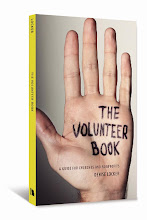Esther Bradfield’s daughter, Angelina was working in Washington, D.C. when Esther can for a visit. Esther and Angelina made plans to spend some of their time together volunteering during a marathon. “We were made aware of a need with the USO. We would help the USO provide drinks and snacks for Marines during their marathon,” Esther said.
The morning arrived cold and rainy, and the hot cup of coffee or chocolate they served was a welcome treat for the men and women in the armed forces. “We were thankful that for the majority of our time of service the rain stopped. However, toward the end of the race, the wind and rain came back full force. A few of the Marines pitched an awning over the food table, but the wind blew it over. In order to keep it in place, the Marines stayed on duty, one at each pole of the tent, standing and holding the tent up until the last Marine had a chance to receive a drink or snack. What a sight, what a day, what a rewarding service! And we, in turn, were grateful for their service to us,” Esther said.
Sunday, November 7, 2010
Monday, November 1, 2010
Peace Corps volunteer total hits a 40-year high
By Ed O'Keefe
Washington Post Staff Writer
Thursday, October 28, 2010; 10:08 PM
More people are volunteering with the Peace Corps than at any point since 1970, the agency said Thursday as it touted a 13 percent year-to-year increase in head count.
As of Sept. 30, there were 8,655 Peace Corps volunteers working in 77 host countries, up almost 1,000 volunteers from 2009, the agency said. The new total falls short of the 9,000 volunteers who worked with Peace Corps in 59 countries in 1970.
New host countries, extended volunteer stays and the agency's $400 million operating budget - its largest ever- contributed to the jump. The Peace Corps reopened programs in Colombia, Indonesia and Sierra Leone and reopened its suspended program in Madagascar, it said.
The agency's volunteer head count fell to a low of 5,380 in 1982 but climbed steadily through the 1980s. In 1985, Congress set a goal of having 10,000 volunteers in the field by 1992, a mark not yet reached.
The average age of Peace Corps volunteers is 28, but 7 percent are over age 50 (the oldest is 86). Nineteen percent of volunteers are minorities, 60 percent are women and 90 percent hold at least a bachelor's degree.
Education remains the most popular sector of service for volunteers, but others have worked on health and HIV/AIDS prevention, business development, youth development, and environmental and agricultural projects. Volunteers are almost evenly divided across Latin America, Africa and Europe/Asia, the agency said.
"Every day, Peace Corps volunteers strive to make a difference and have improved the lives of millions of people - not just in communities around the world, but also in their local communities in the United States once they return home," said Peace Corps Director Aaron S. Williams. "This is the legacy of [President John F. Kennedy's] concept of international service, an idea that continues to capture the imagination of thousands of service-minded Americans today."
More than 200,000 Americans have served in 139 countries since Kennedy established the Peace Corps in 1961. It became an independent federal agency in 1981.
Washington Post Staff Writer
Thursday, October 28, 2010; 10:08 PM
More people are volunteering with the Peace Corps than at any point since 1970, the agency said Thursday as it touted a 13 percent year-to-year increase in head count.
As of Sept. 30, there were 8,655 Peace Corps volunteers working in 77 host countries, up almost 1,000 volunteers from 2009, the agency said. The new total falls short of the 9,000 volunteers who worked with Peace Corps in 59 countries in 1970.
New host countries, extended volunteer stays and the agency's $400 million operating budget - its largest ever- contributed to the jump. The Peace Corps reopened programs in Colombia, Indonesia and Sierra Leone and reopened its suspended program in Madagascar, it said.
The agency's volunteer head count fell to a low of 5,380 in 1982 but climbed steadily through the 1980s. In 1985, Congress set a goal of having 10,000 volunteers in the field by 1992, a mark not yet reached.
The average age of Peace Corps volunteers is 28, but 7 percent are over age 50 (the oldest is 86). Nineteen percent of volunteers are minorities, 60 percent are women and 90 percent hold at least a bachelor's degree.
Education remains the most popular sector of service for volunteers, but others have worked on health and HIV/AIDS prevention, business development, youth development, and environmental and agricultural projects. Volunteers are almost evenly divided across Latin America, Africa and Europe/Asia, the agency said.
"Every day, Peace Corps volunteers strive to make a difference and have improved the lives of millions of people - not just in communities around the world, but also in their local communities in the United States once they return home," said Peace Corps Director Aaron S. Williams. "This is the legacy of [President John F. Kennedy's] concept of international service, an idea that continues to capture the imagination of thousands of service-minded Americans today."
More than 200,000 Americans have served in 139 countries since Kennedy established the Peace Corps in 1961. It became an independent federal agency in 1981.
Subscribe to:
Comments (Atom)





